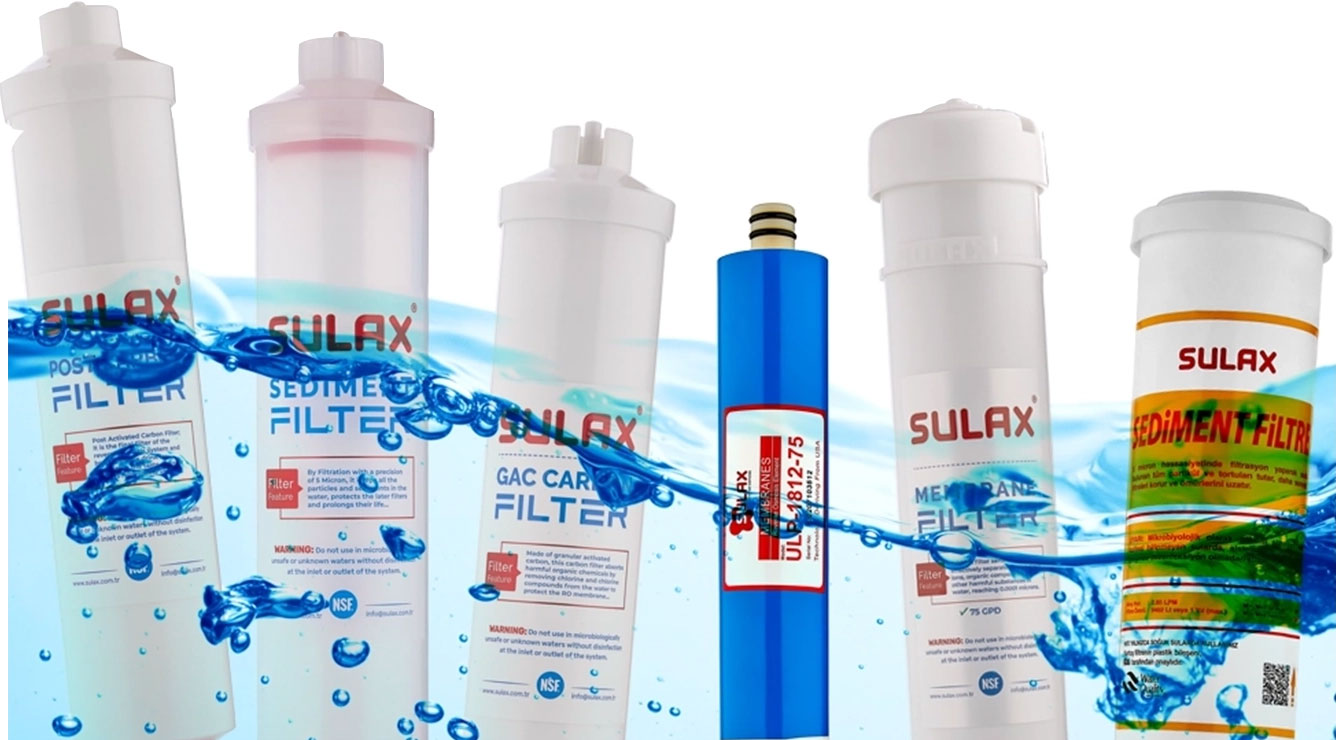
The cleanliness and safety of the water we drink at home depend directly on the performance of the water purification device we use. However, to achieve maximum efficiency from these devices, regular maintenance and cleaning are essential. So, how should a water purifier be maintained? What steps should you follow? How often should different parts be cleaned? In this article, we will examine all the details of water purifier cleaning step by step.
Cleaning your water purifier is one of the most critical factors for consuming healthy water. Over time, sediment, limescale, rust, and microbiological build-up accumulate in the filters, reducing the device’s performance and negatively affecting the taste and smell of the water. Additionally, these deposits can damage internal components and shorten the lifespan of the filters.
Neglecting regular maintenance does not only lead to malfunctions but can also result in consuming unsafe water. Since municipal tap water may contain microbes, chlorine, and heavy metals, an effective filtration system is vital.
How often should water purifiers be maintained? The answer depends on usage frequency and water contamination levels. In general, the recommended maintenance intervals are:
If you notice a change in taste, slow water flow, or unusual sounds from the unit, these are signs that maintenance is needed.
The answer to how to maintain a water purifier involves several essential steps. General cleaning and filter replacement should be performed in order. Here are the key points to consider:
When these steps are done by professionals, results are safer and more effective. However, some tasks like filter replacement can also be performed by users with care.
Faucets and hoses are often neglected during cleaning, even though they can harbor bacteria and limescale over time. To clean them, follow these steps:
This also helps remove any deposits that may restrict water flow.
One of the most overlooked parts of a water purifier is the storage tank. However, bacteria and unpleasant odors can build up inside over time. To clean the tank:
Tank cleaning should be performed once a year or every 6 months in cases of frequent use.
Inline filters (such as granular or block carbon) are essential for improving water taste and odor. However, over time, they also become clogged or contaminated.
Regular replacement of these filters is crucial for effective water purifier cleaning.
One of the most important steps in water purifier maintenance is timely replacement of the pre-filter. The pre-filter is the first line of defense, capturing sediment, sand, and larger particles in the water. For this reason, it becomes dirty much faster than other filters.
On average, pre-filters should be replaced every 3 to 6 months. In areas using well water or with high limescale levels, this period can be shorter. In systems with transparent filter housings, you can visually check how dirty the filter is. If not replaced on time, the pre-filter will reduce water quality and shorten the lifespan of other filters, negatively affecting the purifier’s overall performance. That’s why regular inspection and replacement are essential.
Over time, sediment, limescale, bacteria, and other contaminants accumulate in the filters, causing performance loss. This not only lowers water quality but also shortens the device’s lifespan. Without cleaning, consuming healthy water is impossible.
On average, the pre-filter should be cleaned every 6 months, and a thorough maintenance with filter replacement should be done annually. However, this can vary depending on usage frequency and water contamination.
The lifespan of activated carbon, sediment, and membrane filters varies. Pre-filters should be replaced every 6 months, carbon filters once a year, and membrane filters every 2–3 years. These intervals may differ depending on the device brand.
The faucet and hoses can harbor bacteria if neglected. They should be cleaned every 2–3 months using food-safe disinfectant or lemon water. If you notice discoloration or unpleasant odors in the hoses, replace them.

Fill out the form and be the first to enjoy the benefits!